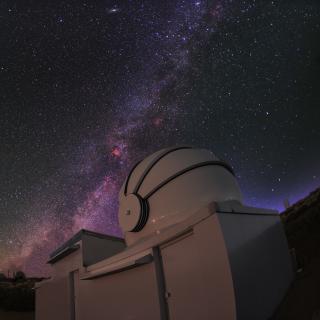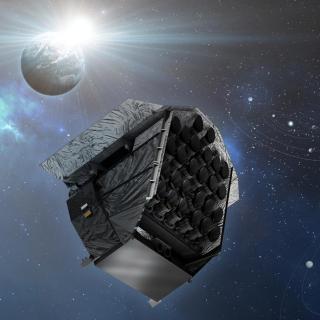The EMIR infrared spectrograph of the Gran Telescopio CANARIAS (GTC) saw its first light successfully on June 13th, obtaining, inter alia, an image of the globular star cluster NGC 5053. To take these observations, the telescope was pointed at a guide star in the centre of the GTC field of view, in order to test the optical alignment of the instrument with respect to the telescope. "The star –explains Francisco Garzón, the Principal Investigator of the project- appeared almost in the centre of the detector of EMIR, and after that we pointed at more and more complex objects until, half an hour later, we took the image of NGC 5303. The cluster showed up clearly, although slightly out of focus, which we corrected rapidly", he adds. On the following day they took the first spectra using the calibration lamps.
"We were very happy indeed to see the images after intense weeks of work”, declared Mary Barreto, the technical manager of EMIR, who coordinated its transfer, verification and integration. "The success is the result of and excellent work between engineers and technicians of the IAC and GTC".
EMIR is an instrument designed, made, assembled, and verified entirely at the IAC. It will obtain images and spectra in the near infrared, which will allow us to study the coolest and most distant objects in the universe. It is cryogenic, because working in this range of the spectrum it needs to be cooled in a closed tank to around -200º centigrade. In the same way as OSIRIS, it is a versatile instrument, and used with the 10.4 m diameter primary mirror of the GTC, it will make new, high precision observations.
EMIR left the Headquarters of the Instituto de Astrofísica de Canarias (IAC) in La Laguna on May 19th, to be transferred to the Roque de los Muchachos Observatory, in Garafía (La Palma). Transferring it to the GTC was a slow an careful task, due to its great complexity; it was also difficult to install on the rotator of the telescope. After some weeks of tests, EMIR has passed its first exam satisfactorily. "I am sure that the scientific community, above all the Spanish community, knows how to make a big effort to obtain the best science with EMIR", concludes Garzón.



